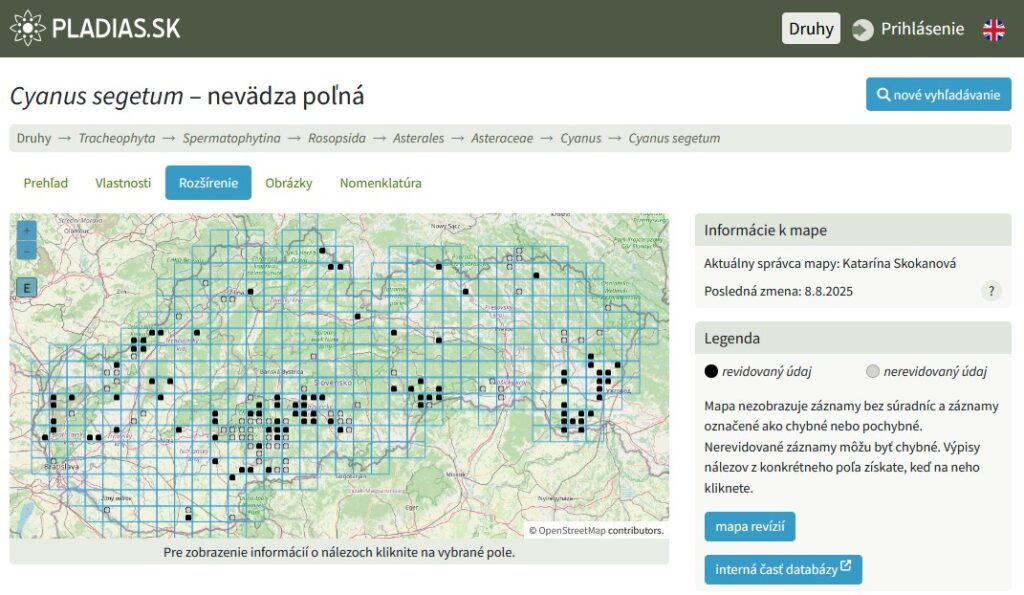Database of the Slovak Flora and Vegetation PLADIAS.SK aggregates occurrence records of wild and naturalized vascular plant taxa in Slovakia. We actively supply it with current and historical floristic data from various sources, including:
- data published in domestic and international literature,
- herbarium collections stored in scientific and research institutions, museums, etc., in Slovakia and abroad, as well as private collections,
- other databases that operate in parallel or have already ceased to exist,
- personal observations and other unpublished data.
Our long-term goal is for the PLADIAS.SK portal – Database of Slovak Flora and Vegetation to become a complete and up-to-date source providing an overview of the distribution of vascular plants in Slovakia. Achieving this goal requires processing all existing data from available sources, implementing the latest scientific knowledge, and involving experts to revise individual taxonomic groups.
The unified data processing in the PLADIAS.SK database increases their usability and availability for other scientific teams. Thanks to the connection between our database and the global repository of digitized data GBIF, these data also become more visible to the global scientific community.
The PLADIAS.SK Database of Slovak Flora and Vegetation currently contains more than two million floristic records. These records are the result of scientific studies, habitat mapping projects, and other field surveys stored in the Central Database of Phytosociological Records in Slovakia, the Comprehensive Information and Monitoring System of the State Nature Conservancy of the Slovak Republic, the former Database of Slovak Flora DataFloS, as well as numerous scientific articles, herbarium collections, and personal floristic notes.
Database webpage: PLADIAS.SK
On the page Additional information and documents for download, we provide documents, presentations and recordings from the seminar for those who want to learn more about the database or want to participate in procession and import of new data.




